

What is connecting rod ?
The connecting rod is an important component in the automobile engine, connecting the piston and the crankshaft, transmitting the reciprocating motion of the piston, driving the rotational motion of the crankshaft, and outputting power for the engine. The connecting rod needs to have sufficient strength and rigidity to cope with the alternating pressure and inertia force of the expanding gas, so the processing accuracy of the connecting rod will directly affect the performance of the diesel engine, so the choice of precision processing of the inner hole of the connecting rod is also crucial.
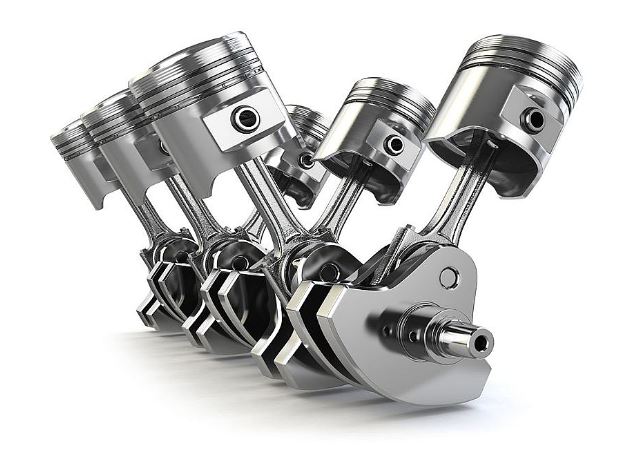
Among them, the processing of the big and small end of the connecting rod is an important process in the machining of the connecting rod, and its processing accuracy has a great influence on the quality of the connecting rod.
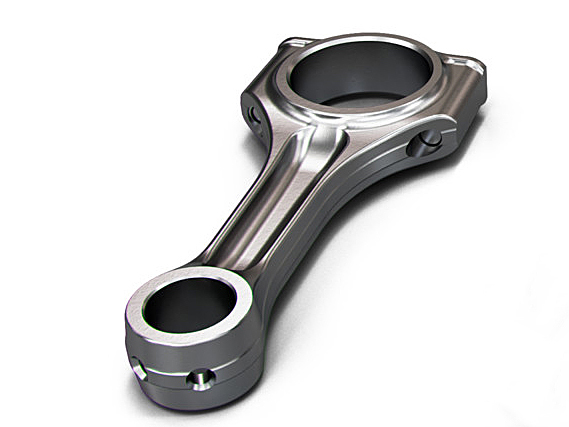
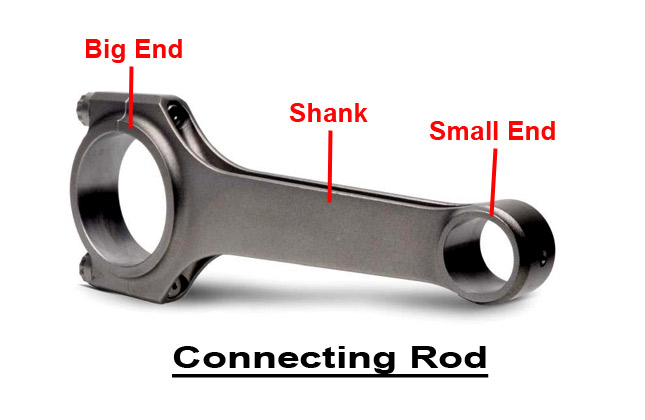
Diamond and CBN honing reamer are usually used for honing connection rod,single stroke honing is also called sequential honing or diamond hinge honing tool, it is a new process of micron precision machining, can process through hole, blind hole, keyway hole, step hole and other hole.
After traditional honing, the tolerance grade of the large head hole of the connecting rod reaches IT6, and the surface roughness Ra is not greater than 0.4μm; the tolerance grade of the small head hole is IT8, and the surface roughness Ra is not greater than 3.2μm.
Single-stroke honing has a decisive process advantage over oilstone honing on the same parts, especially in terms of surface roughness, hole shape, etc., which can generally be improved by more than double according to the use method and debugging accuracy.
Definition of honing process:
The honing process is a precision hole processing process that uses the machined surface as a guide and removes the machining allowance through the relative movement of the tool and the part under a certain feed pressure. Its cutting trajectory is a cross-net pattern.
Principle of honing process: Honing is to use one or more oilstones installed on the circumference of the honing head. The oilstone is expanded radially by the expansion mechanism to press it against the hole wall of the workpiece to produce a certain contact surface. At the same time, the honing head rotates and reciprocates. The part does not move; or the honing head only rotates and the workpiece reciprocates, thereby realizing honing.
During honing, the honing head rotates and reciprocates or the honing head rotates and the workpiece reciprocates, so that the machined surface forms a cross-helical cutting trajectory, and the number of revolutions of the honing head in each reciprocating stroke time is not an integer, so between two strokes, the honing head is staggered at a certain angle in the circumferential direction relative to the workpiece. This movement prevents the movement trajectory of each abrasive grain on the honing head from repeating on the hole wall. In addition, every time the honing head rotates, the oilstone has an overlapping length in the axial direction with the cutting trajectory of the previous rotation, making the connection between the front and rear grinding trajectories smoother and more uniform. In this way, during the entire honing process, the chances of interference between the hole wall and the oilstone surface at each point are almost equal.
Therefore, as honing progresses, interference points are constantly generated on the hole surface and the oilstone surface. These interference points are constantly ground away and new interference points are generated. The contact area between the hole and the oilstone surface is constantly increased, the degree of mutual interference and the cutting action are constantly weakened, and the roundness and cylindricity of the hole and the oilstone are constantly improved, and finally the hole surface creation process is completed. In order to obtain better cylindricity, when possible, the parts are often turned around during honing, or the relative position of the honing head and the workpiece axial direction is changed.
Characteristics of honing:
1. High processing accuracy:
Especially for some small and medium-sized through holes, the cylindricality can reach within 0.001mm. For some parts with uneven wall thickness, such as connecting rods, the roundness can reach 0.002mm. For large holes (aperture within 200mm), the roundness can also reach 0.005mm. If there is no annular groove or radial hole, etc., it is possible to have a straightness within 0.01mm. Honing has higher processing accuracy than grinding. During grinding, the bearing supporting the grinding wheel is located outside the honed hole, which will produce deviations. Especially for small hole processing, grinding is worse than honing. Honing can generally only change the shape accuracy of the processed part. If you want to change the position accuracy of the part, you need to take some necessary measures. For example, use a panel to improve the verticality of the end face of the part and the axis (the panel is installed on the stroke arm, adjust it to be perpendicular to the rotating spindle, and the part can be processed on the panel).
2. Good surface quality
The surface is cross-grid, which is conducive to the storage of lubricating oil and the maintenance of oil film. It has a high surface bearing rate (the ratio of the actual contact area between the hole and the shaft to the matching area between the two), so it can withstand large loads and resist wear, thereby improving the service life of the product. The honing speed is low (a few tens of times the grinding speed), and the oilstone is in surface contact with the hole, so the uniform grinding pressure of each abrasive grain is small, so the heat generated by the workpiece is very small, and there is almost no thermal damage and metamorphic layer on the surface of the workpiece, and the deformation is small. There is almost no embedded sand and extruded hard layer on the honing surface. Grinding has a greater cutting pressure than honing, and the abrasive tool and the workpiece are in line contact with a higher relative speed. Therefore, high temperature will be generated in local areas, which will cause permanent damage to the surface structure of the parts. 3. Wide processing range: Mainly process various cylindrical holes: through holes. Axial and radial interrupted holes, such as holes with radial holes or slots, keyway holes, spline holes. Blind holes. Multi-step holes, etc. In addition, with a special honing head, conical holes, elliptical holes, etc. can also be processed, but due to the complex structure of the honing head, it is generally not used. The cylindrical honing tool can be used to hone the cylinder, but the removal amount is much smaller than the internal honing amount. Almost any material can be processed, especially the application of diamond and cubic boron nitride abrasives. At the same time, the efficiency of honing is also improved.
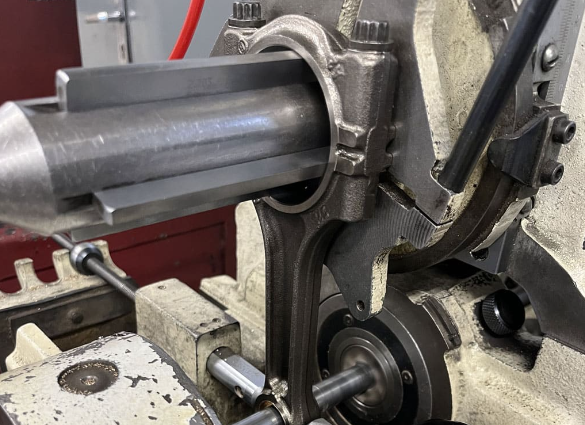
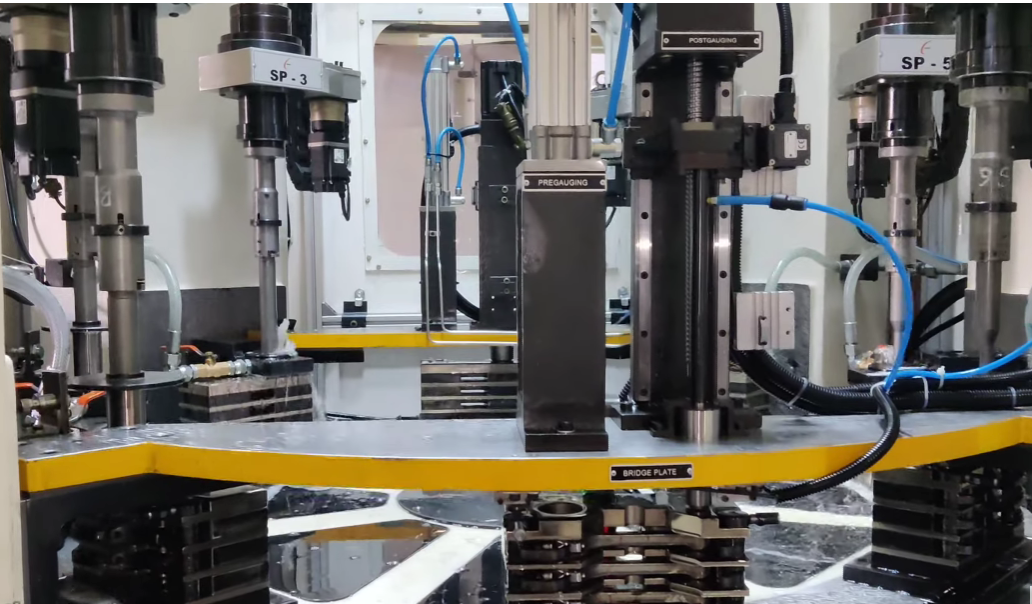
4. Small cutting allowance.
5. Strong hole correction ability
The honing process can greatly improve the dimensional accuracy, roundness, straightness, cylindricity and surface roughness of the hole and outer circle by removing the minimum processing allowance.
Why does honing can finishing ?
Think of the honing whetstone and the workpiece as two mutually grinding surfaces. In order to achieve high processing quality, they should be in relative reciprocating motion so that the motion trajectory of each abrasive grain on the whetstone on the hole wall does not repeat. During processing, the whetstone and the workpiece are in surface contact, using a low cutting speed and pressure to reliably remove a small machining allowance of the workpiece (generally 0.01~0.08mm, which needs to be determined according to different processing materials, processing batches and processing subject to requirements). Honing can significantly improve the dimensional accuracy of the workpiece (small holes up to 1 to 2 μm, medium holes up to 10 μm, and both are even smaller) and shape accuracy (small hole roundness up to 0.5 μm, cylindricity up to 1 μm, medium hole roundness up to More than 3 μm or even smaller; when the hole length is 300 to 500 mm, the cylindricity reaches less than 5 μm, the processing error dispersion range is small, only 1 to 3 μm, the processed surface quality is high, and its surface roughness value R a is only about 0.4 to 0.04 μm, or even smaller), generally because the average pressure P of the whetstone on the workpiece is small (about 0.4 ~ 0.8MPa), the heat generation is small and there is less deterioration layer on the machined surface, because the honing head is in surface contact with the workpiece and participates in the cutting grinding process at the same time. It has many grains, so it is also an efficient processing method.
Semiconductor Industry Solutions
PCD & PCBN Tools Grinding Industry
Diamond Cutting Bruting Polishing
Add: No.171 Zhongyuan Rd, Zhongyuan District, Zhengzhou, 450001, Henan, China
Tel: +86-371-86545906
Phone / Whats App: +86 18339903057
E-mail: [email protected]



